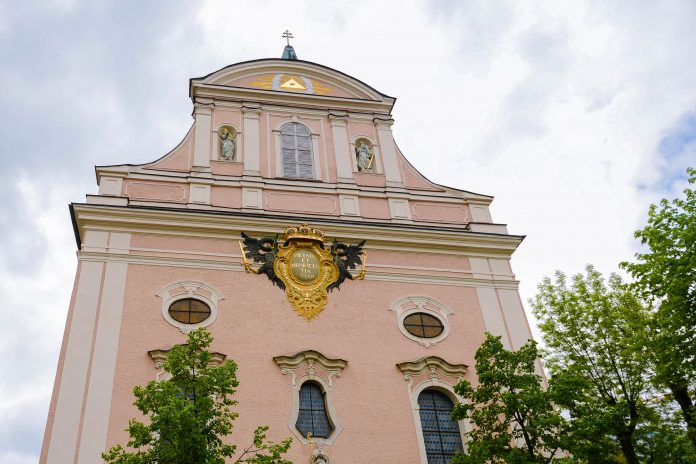Bad Ischl im oberösterreichischen Salzkammergut ist ein bekannter Kurort und ehemaliger beliebter Sommersitz der Habsburger. Die Spuren von Sissi und Franz sind in der pittoresken Altstadt noch heute allgegenwärtig.
Der kleine Ort Bad Ischl im oberösterreichischen Salzkammergut ist ein bekannter Kurort und Verlobungsort des österreichischen Kaisers Franz Joseph mit seiner berühmten Gattin Elisabeth, besser bekannt als Sissi.
Die selbsternannte „Kaiserstadt“ Bad Ischl kann am besten zu Fuß erkundet werden. Auf eurem Stadtspaziergang kommt ihr an einer Vielzahl an historisch wertvollen Häusern, schmucken Gassen und prächtigen Gebäuden vorbei.
Inhaltsverzeichnis
Trinkhalle
Die Trinkhalle in Bad Ischl wurde von 1829 bis 1831 von Franz Lössl erbaut und steht unter Denkmalschutz. Heute fungiert sie als Veranstaltungsort für Konzerte und Theateraufführungen, kleine Touristeninformation und Ausgangspunkt für Stadtführungen in Bad Ischl.
Stadtpfarrkirche St. Nikolaus
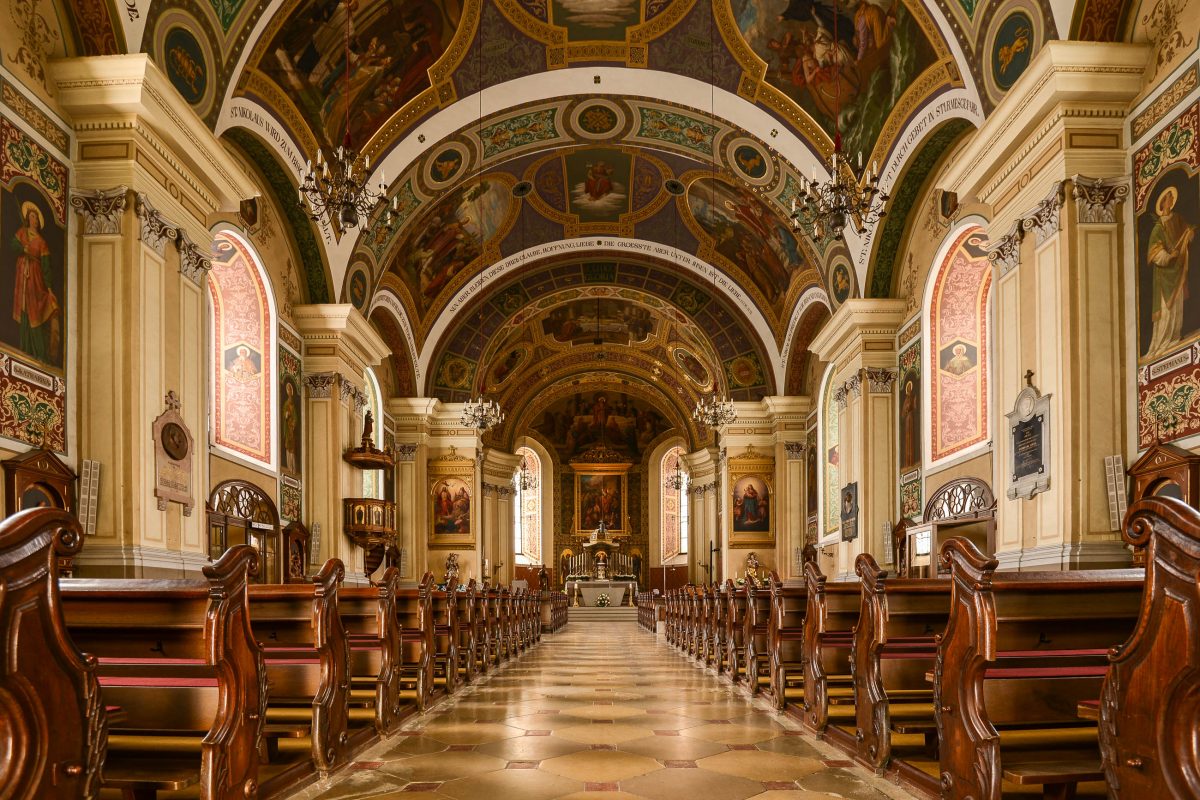
Die St. Nikolaus-Kirche in Bad Ischl wurde bereits im Jahr 1320 als „Kirch zu Ischl“ erstmals urkundlich erwähnt. Ihr heutiges Erscheinungsbild stammt aus den 1770er-Jahren, als Maria Theresia sie im klassizistischen Stil neu aufbauen ließ.
Zu Zeiten Kaiser Franz Josephs wurde sie als „Hofpfarrkirche“ bezeichnet. 1880, zum 50. Geburtstag des Kaisers, wurde die neue Inneneinrichtung feierlich eingeweiht. Die Kirche besaß nun kunstvollen Fresken von Georg Mader, Altarbilder von Leopold Kupelwieser, neue Altäre und die modernste Orgel der österreich-ungarischen Monarchie mit 3.700 Pfeifen.
10 Jahre später fand in der St. Nikolaus-Kirche die prachtvolle Hochzeit von Erzherzogin Marie Valerie, der jüngsten Tochter von Sissi und Franz, mit Erzherzog Franz Salvator statt. Für dieses Spektakel brachten 21 Waggons den Blumenschmuck von Wien nach Bad Ischl. Auf der imposanten Orgel spielte der kaiserliche Hofkomponist Anton Bruckner. Eine Gedenktafel an der Kirche erinnert heute noch an die Aufenthalte des berühmten Komponisten in Bad Ischl.
Seit dem Jahr 1947 wird jedes Jahr am 18. August zum Geburtstag Franz Josephs die „Kaisermesse“ gefeiert. Zu diesem speziellen Anlass finden sich bis zu 500 Uniformierte aus Böhmen, Ungarn und Kroatien ein.
Café Ramsauer
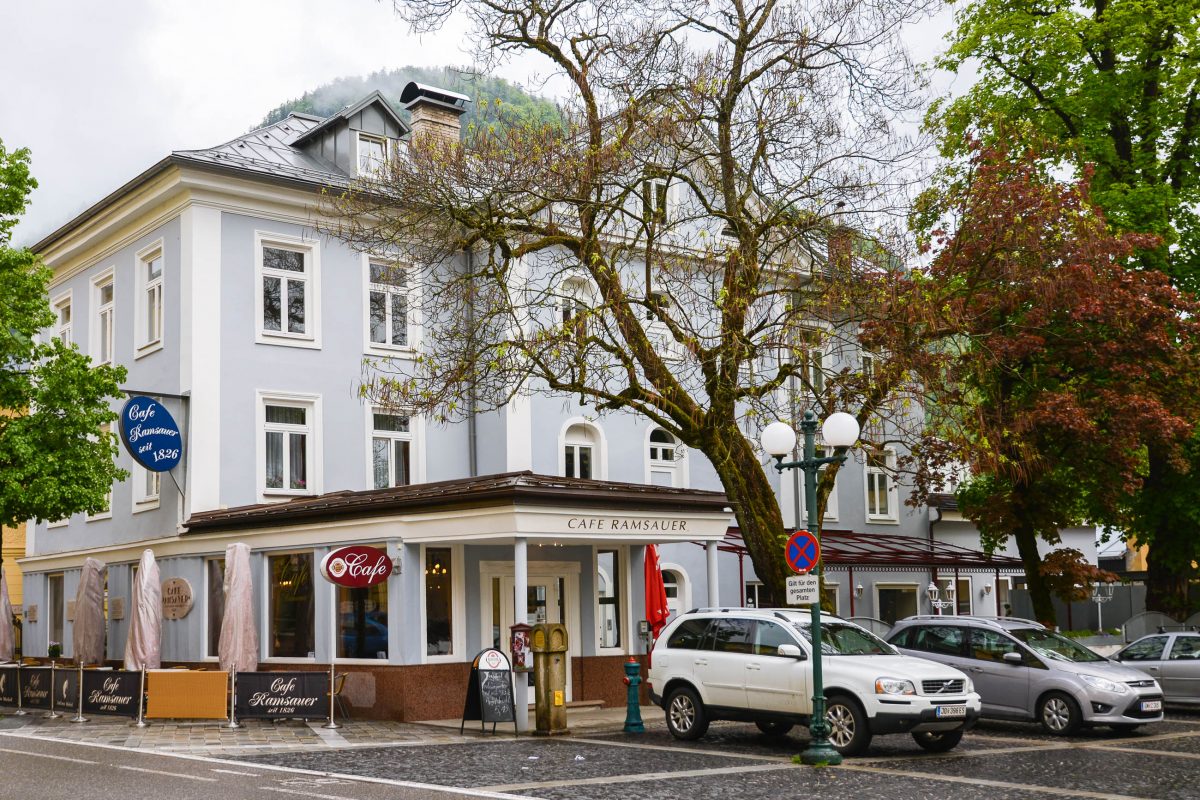
Das unscheinbare Altwiener Kaffeehaus in der Kaiser-Franz-Josef-Straße stammt aus dem Jahr 1826. Zu Kaiserzeiten war es ein beliebter Künstlertreff, in dem schon Johann Strauß, Johannes Brahms, Helmut Berger und Ludwig Bösendorfer zu Gast waren.
Das Café Ramsauer mit nostalgischem Flair ist Bad Ischls ältestes Kaffeehaus und serviert von morgens bis in den späten Nachmittag Frühstück, Mittagessen, Kaffeespezialitäten und süße Köstlichkeiten.
Lehár-Filmtheater

Das Lehár-Filmtheater wurde im Jahr 1827 errichtet und hieß ursprünglich Kurtheater. Sein berühmtester Förderer war der Erzherzog Franz Karl, der Vater von Kaiser Franz Joseph, der bei manchen Aufführungen die Karten für die leeren Sitzplätze aufkaufte, um die Vorstellung zu sichern.
1921 wurde es zum Lichtspieltheater ausgebaut. Heute wird das Lehár-Filmtheater für Kabaretts, Konzerte, Lesungen, Kino- und Theateraufführungen genutzt und ist das viertälteste noch bespielte Theater in Österreich.
Tipp: Das Haus Rosenstöckl war das Wohnhaus von Franz Lehár bevor er 1910 nach seinem Durchbruch mit „Die lustige Witwe“ in seine Villa einzog. Es kann heute als Ferienhaus gemietet werden.
Kongress- und Theaterhaus
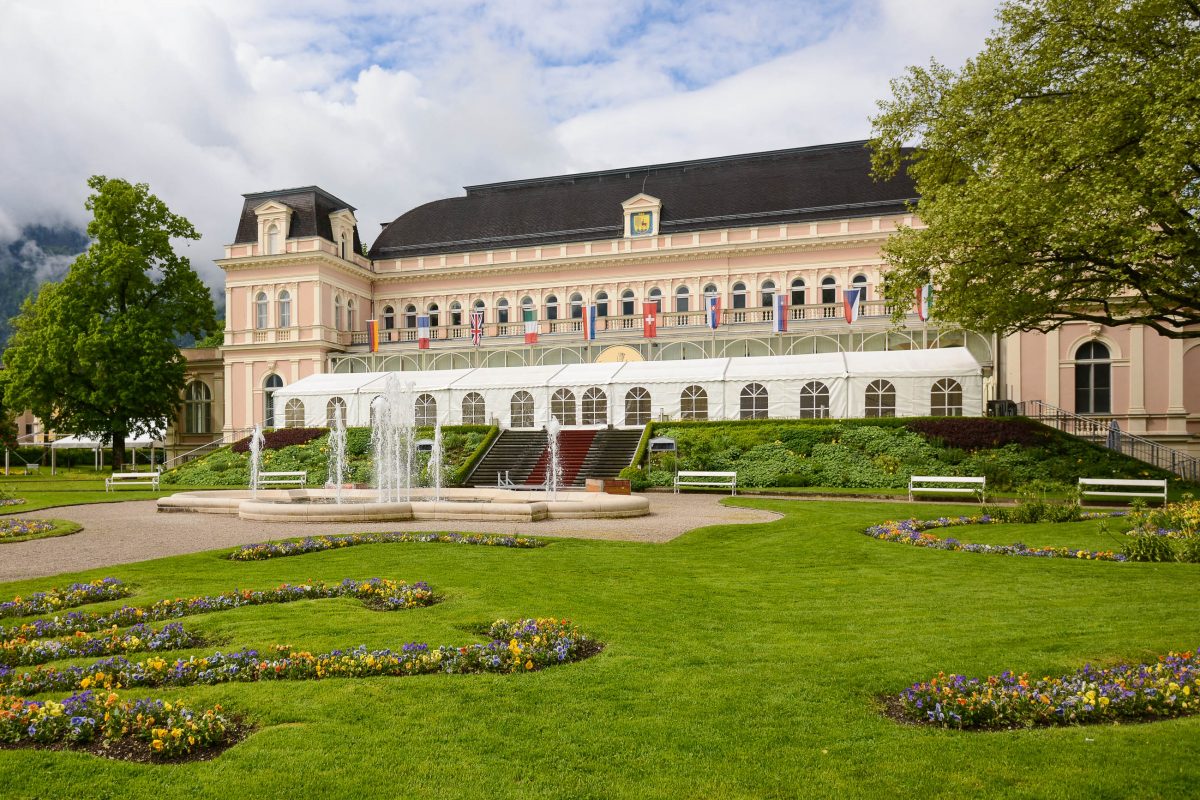
Das Kongress- und Theaterhaus am Stadtpark in Bad Ischl stammt aus dem Jahr 1875 und wurde vom Architekten Hyazinth Michel erbaut. Früher wurden hier kaiserliche Bälle und Empfänge abgehalten.
Seit der Restaurierung 1997 fungiert das Kongress- und Theaterhaus als Veranstaltungsort für Bankette, Empfänge, Konzerte und ist auch Spielstätte des Lehár-Festivals und der Operettenwochen.
Hotel Austria, Stadtmuseum

Das Hotel Austria, früher „Seeauerhaus“, gilt als Jugendsommerhaus von Kaiser Franz Joseph. Im August 1853 verlobte er sich hier im Alter von 23 Jahren mit der damals 15jährigen Sisi. Von 1880 bis 1970 wurde das Gebäude als Hotel genutzt, bis es schließlich zum Stadtmuseum von Bad Ischl umfunktioniert wurde.
Sophiens Esplanade
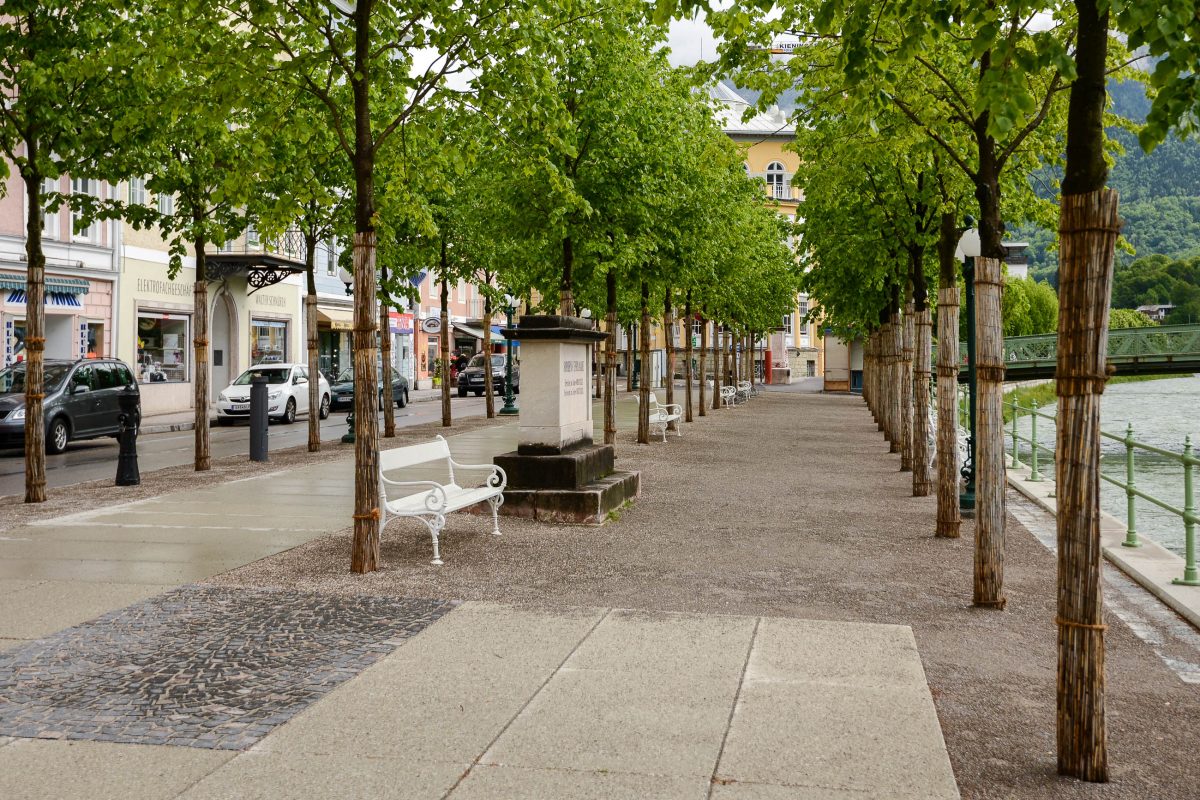
Gleich vor dem ehemaligen Hotel Austria führt die Flaniermeile „Sophiens Esplanade“ an der Traun entlang. Diese schmucke Straße wird von den Salzfertigerhäusern gesäumt. Diese waren damals für die Logistik des Salzhandels auf der Traun zuständig.
Für die Landgartenschau 2015 wurden an drei Reihen an Bäumen gepflanzt – so wie zu Sissis Zeiten. Über den Richard-Tauber-Steg gelangt man auf die andere Seite der Traun und findet sich am Fuß des Siriuskogel, wo es einen Miniatur-Prater zu besichtigen gibt.
Hotel zur Post
Der heutige Posthof wurde in den späten 1820er-Jahren von Franz und Magdalena Koch als erstes Hotel des Salzkammergutes eröffnet. 1988 wurde der Hotelbetrieb eingestellt und das markante sonnengelbe Gebäude beherbergt nun private Wohnungen, Büroräumlichkeiten, Ordinationen, Gaststätten und sogar eine Tiefgarage.
Hotel Elisabeth und Café Sissy
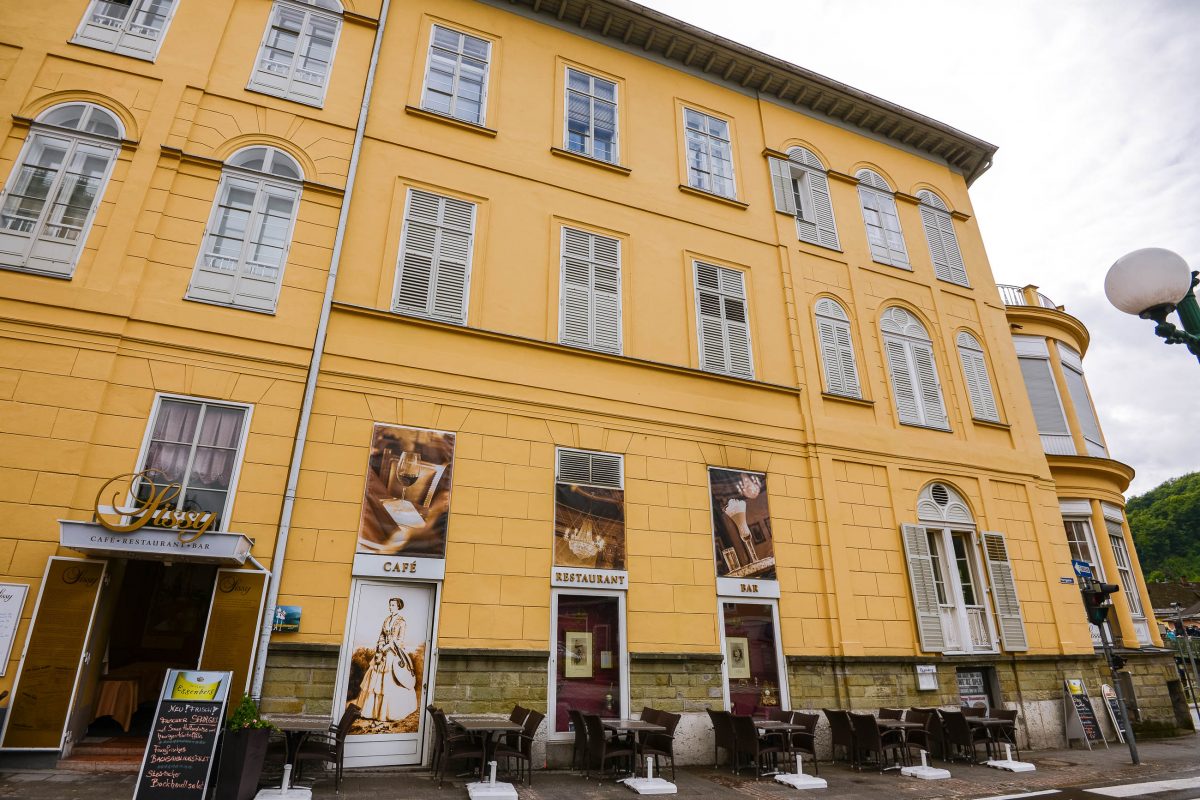
Der dottergelbe Bau des Hotels Elisabeth wurde vom italienischen Unternehmer Felix Tallachini errichtet und hieß vormals auch „Hotel Tallachini“. Hier nächtigte die erzherzogliche Familie zur Zeit der Verlobung mit Sissi. Heute heißt das Gebäude „Hotel Elisabeth“. Im Café Sissy im Erdgeschoß kann das Flair des 19. Jahrhunderts genossen werden.
Café Zauner

Das berühmte Café Zauner in Bad Ischl wurde 1832 vom gebürtigen Weinviertler Johann Zauner gegründet. Er absolvierte in Wien die Zuckerbäckerlehre und war ein Freund von Dr. Wirer, der ihn mit nach Bad Ischl nahm. So entstand die erste Zuckerbäckerei Bad Ischls, die bald auch kaiserlich-königlicher Hoflieferant war. Im Gästebuch des Café Zauner befindet sich übrigens ein Eintrag vom Komponisten Anton Bruckner.
Heute hat das Café Zauner zur Hochsaison im Sommer bis zu 100 Mitarbeiter und vertreibt hauptsächlich handgemachte Köstlichkeiten, von denen der Zaunerstollen aus Nuss und Nougat und die Nestroy-Semmerl aus weißer Schokolade zu den Berühmtesten gehören.
BILDER: Bad Ischl, Österreich
Geschichte von Bad Ischl
Bad Ischl war höchstwahrscheinlich bereits in der Hallstatt-Zeit ab 800 vor Christus besiedelt und gehörte ab 15 vor Christus zum Römischen Reich. Nach mehreren Vernichtungsschlägen durch Römer, Slawen und Ungarn konnte sich Bad Ischl ab etwa 1.000 nach Christus erholen. Zu dieser Zeit wurde der Salzhandel wieder aufgenommen und Bad Ischl gewann zunehmend an Wohlstand.
Im Jahr 1466 erhielt Ischl vom damaligen Habsburger Kaiser Friedrich III. das Marktrecht. 1571 wurde mit dem Pfannhaus an der Traun Ischls erste eigene Saline errichtet, wodurch Ischl fortan nicht nur mit dem Salzhandel, sondern auch dem Salzabbau Gewinn machte.
Kurstadt Bad Ischl
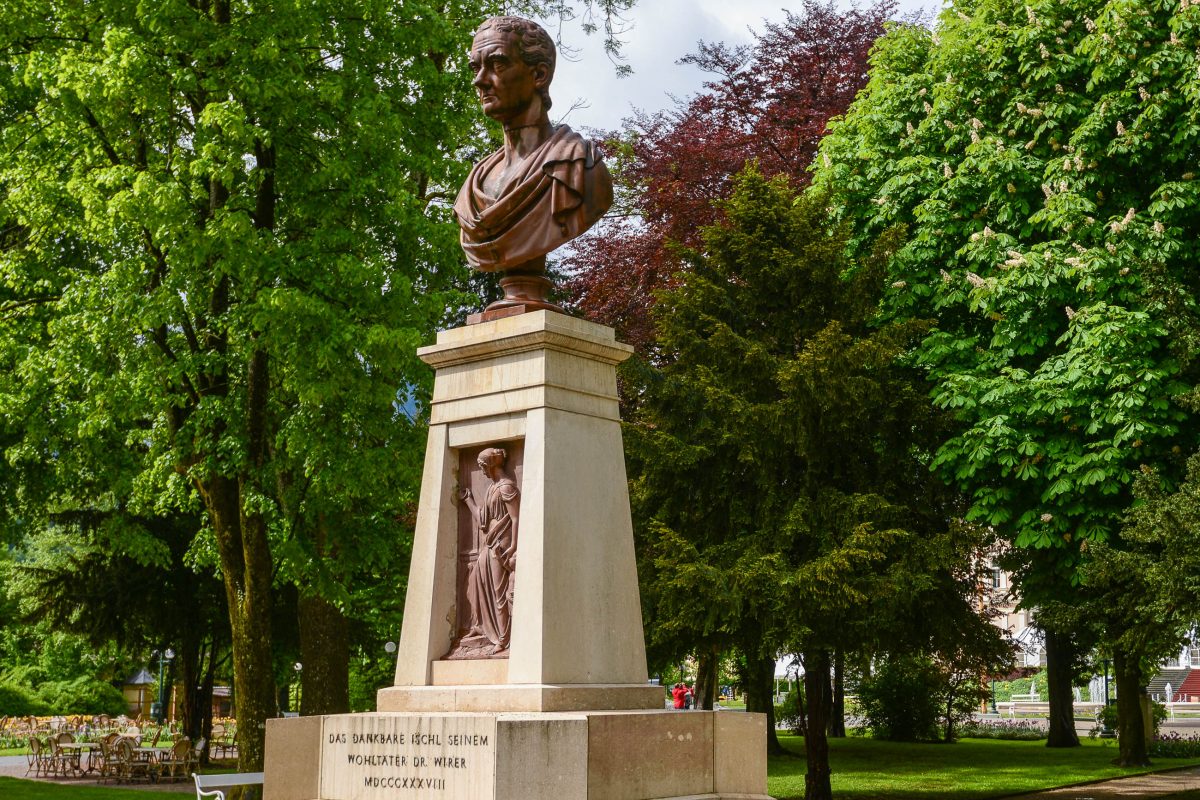
Die tatsächliche wirtschaftliche Blüte Ischls begann jedoch im 19. Jahrhundert. Damals, im Jahr 1821, kam der Wiener Arzt Dr. Franz Wirer nach Ischl. Gemeinsam mit dem Salinenphysikus Dr. Josef Götz, der die Wirkung von Solebädern bereits seit 1807 untersuchte, gründete der gebürtige Korneuburger den bis heute beliebten und bekannten Kurort Bad Ischl.
Bereits Ende der 1820er-Jahre lag die Anzahl der Kurgäste von auswärts schon bei 1.000 und bald war Bad Ischl unter den Medizinern in ganz Europa ein Begriff. Offiziell als Kurort anerkannt wurde Bad Ischl allerdings erst knapp 100 Jahr später.
Kaiserstadt Bad Ischl
Die wohl berühmtesten Kurgäste Bad Ischls war das erzherzogliche Ehepaar Franz Karl und Sophie, die sich sehnlichst ein Kind wünschten. Und siehe da – nach ihrem dritten Kuraufenthalt in Bad Ischl kam ihr Sohn Franz Joseph auf die Welt – der spätere Kaiser von Österreich.
Doch dies ist nicht das einzige, was die Habsburger mit Bad Ischl verbindet. Von 1849 bis 1914 war Bad Ischl die offizielle Sommerresidenz der österreichischen Kaiserfamilie aus Wien. Franz Joseph verbrachte hier als Kind den Großteil seiner Sommer und verlobte sich mit Elisabeth in Bayern, besser bekannt als Sissi. Der Einfluss der Habsburger und der Kaiserfamilie ist noch bis heute an allen Ecken und Enden von Bad Ischl deutlich zu spüren.
Künstlerstadt Bad Ischl
Seit 1863 war der berühmte Komponist Anton Bruckner jedes Jahr zur Geburtstagsfeier des Kaisers und anderen Anlässen als kaiserlicher Hoforganist anwesend.
Auch Johann Strauß, Franz Lehár und Johannes Brahms verbrachten regelmäßig ihren Sommer in Bad Ischl. Einerseits wegen der Schönheit Ischls, andererseits wohl auch, um der Kaiserfamilie nahe zu sein. Noch heute werden in Erinnerung an die damalige weltbekannte Künstlerszene jährlich die Operettenwochen von Bad Ischl veranstaltet.
Weiterführende Links:
Offizielle Website von Bad Ischl
Offizielle Website des Stadtmuseums von Bad Ischl
Infos zum Lehár-Festival in Bad Ischl

